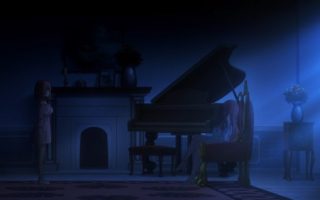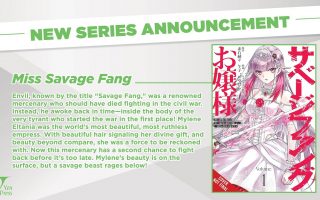Hello folks, and welcome on back to Wrong Every Time. It seems like spring is actually getting off its ass and into some sort of motion at this point, as we’ve finally escaped the chills and showers of early April. I’m thus looking forward to sneaking in a run sometime this afternoon, but in the meantime I’m happy to report that both our film viewings and tabletop adventures are proceeding smoothly.
I’m attempting to maintain a somewhat tricky balance in our current campaign, as I’m both the most comfortable speaking entirely in-character, but also aware of my necessity as a player who actually pushes the party towards their next objectives, rather than simply riffing or waiting for something to happen. As such, I need to be mindful of making sure neither my characterization nor mechanical prodding becomes too overbearing; I’m leading from the back here, but working to make sure Tilly (my nervous goblin cleric) doesn’t overwhelm either the personalities or agency of my allies. D&D is often a process of attempting to construct a coherent fantasy drama out of potentially incompatible base materials, but with a full campaign as DM at my back, I’m doing whatever I can to make sure this one succeeds, and that we collectively embrace a greater degree of in-character drama than ever before. Also, films! Let’s get to those!
First on the list this week was First Knight, a vague retelling of Arthurian legend starring Richard Gere as Lancelot, Julia Ormond as Guinevere, and Sean Connery as King Arthur, alongside Ben Cross as the nefarious Malagant. I’m guessing you know the broad beats of the story: Lancelot and Arthur meet and swiftly become best bros, it turns out they both love Lady Guinevere, and then Malagant storms in to ruin everybody’s good time. The allure of Lancelot’s tale is less in the twists than the telling, and I am sorry to report that First Knight does not tell it very well.
If I were to describe the one emotion that united all of First Knight’s lead players, it would have to be “indifference.” Lancelot seems indifferent to glory, indifferent to Guinevere, indifferent even to his own tragic backstory; he is simply here to have a good time, and such a poise does not lend itself well to the allegedly fearsome emotions dividing the first knight and his king. Absent a passionate selling of the emotions shared by these three would-be heroes, First Knight’s momentum feels less fated than obligated, with neither Arthur’s original fascination with Lancelot nor his later sense of betrayal seeming prompted by actual shared interactions.
A great deal of the blame surely comes down to the script. Scriptwriter William Nicholson seems to be striving for “iconic,” but merely achieves “underwritten,” apparently trusting that the actual substance of these characters’ bonds will be conveyed largely through them staring ponderously into each others’ eyes. Maybe some actors could pull that off, but when you’ve got both Richard Gere and Sean-fuckin’-Connery stumbling around like they missed the table read, I have to imagine you’re suffering from deeper problems than casting the wrong actors. But hey, at least the set design is nice!
Disheartened but still on a medieval kick, we then checked out the recent Damsel, wherein Stranger Things’ Millie Bobbie Brown stars as Elodie, the daughter of an impoverished lord far out in the countryside. When Elodie receives an offer to marry the distant Prince Henry, she is initially elated. However, upon wedding the prince, she is understandably disappointed to discover that the engagement was actually just a trick designed to feed a local dragon, who demands three princesses a generation that the kingdom may live in peace.
From its tongue-in-cheek title to its “This is Not a Fairytale” tagline, it’s obvious that Damsel is a somewhat ham-fisted act of fantasy revisionism, attempting to redress millennia of agency-free ladies in high fantasy adventures. While I’m not sure designing your entire narrative in opposition to patriarchal tropes is the most effective way to dismantle them, I am happy to report that Damsel could also be pitched as “what if The Descent featured a goddamn dragon,” which seems like an altogether more flattering encapsulation of the story’s drama.
So yeah, we’ve got Millie Bobbie Brown scampering behind rocks and constructing makeshift dragon-tricking devices, guided onward by the stone-scratched whispers of other would-be princesses, taunted always by a big dragon with an even bigger chip on its shoulder. It’s an exceedingly visceral sort of fun, and Brown absolutely sells the fatigue, ferocity, and death-defying heroism necessary to square off with a dragon in a fraying wedding dress. With her biggest costar being a CG dragon, it’s basically up to Brown to carry the film on her shoulders, which she manages in spite of a thin script that struggles to frame rightfully second-act twists as third-act revelations. A little more substance outside of that central “princess versus dragon” conceit might have made Damsel a genuinely good film, but as is, it’s still an entertaining ride secured by Brown’s excellent leading performance.
We then continued our journey through the original One Piece films with their third original escapade, Chopper’s Kingdom on the Island of Strange Animals. In aesthetic terms, this one’s unfortunately a dramatic downgrade from the second; the background art is much more limited, storyboarding less dynamic, and there’s almost none of the fluid animation that made its predecessor such a treat. But frankly, I wasn’t really expecting that level of quality from these double feature films in the first place, and Chopper’s Kingdom otherwise offers a charmingly off-kilter Chopper-centric adventure, complete with lots of goofy animal designs and a delightfully Doronjo-adjacent crew of villains.
Chopper’s Kingdom never rises above the level of “early One Piece filler arc that time forgot,” but with One Piece’s current arcs embodying an urgency and scale so distant from these small-time troubles, it remains refreshing to be reminded of the show’s freewheeling early days. There’s really nothing quite like early One Piece, at least not that I’ve seen; the closest comparison point might be the original Dragon Ball, which offers a similarly open dramatic mandate and cartoonish found family sensibility. Though I love Chainsaw Man, I find it unfortunate that Chainsaw Man’s pacing seems to set the standard for modern shonen – most rags-to-riches action adventures require more time to marinate in character dynamics, and the grim-faced action that these stories seem so desperate to reach is frankly one of the less interesting aspects of the genre. Granted, most of them also lack a core group that’s as fun to be around as Luffy or Goku’s gang, but that’s another issue entirely.
Last up for the week was Dr. Giggles, a ‘92 slasher starring Larry Drake as the delightfully deranged doctor in question. Instilled with a fascination with both medical practice and murder by his serial killer father, Drake emerges years after the massacre his father wrought, brandishing a variety of gleaming instruments and a seemingly endless supply of doctor-related puns.
Nothing about Dr. Giggles will surprise or impress you, but that’s not really the film’s intent. Dr. Giggles aims to provide a winking procession of grisly murders and equally gruesome one-liners, and it achieves both with reliable certainty, pairing scalpels and circular saws with lines like “if you think that’s bad, wait until you get my bill” and “it’s a good thing I make house calls.” I’m sure at the tail end of the slasher’s original heyday, a film like this felt rote and exhausted – but at this point, I can only admire its purity of sordid construction. If you’re looking to giggle along with some campy chaos, give it a watch.




